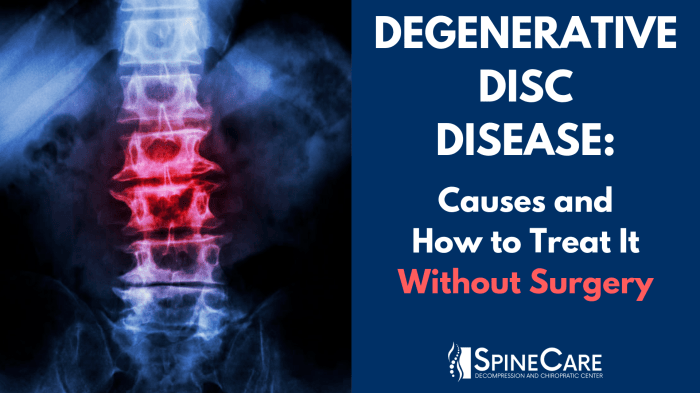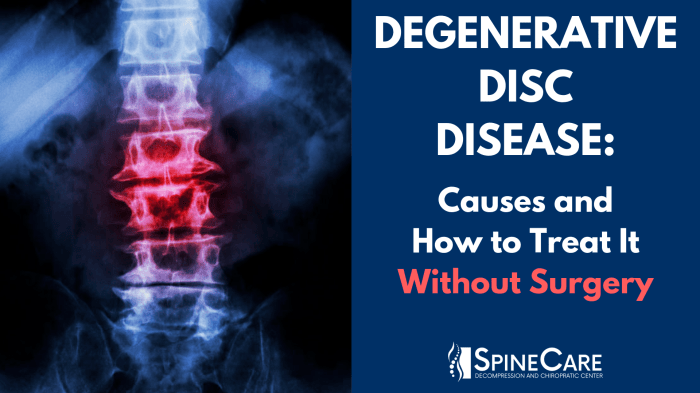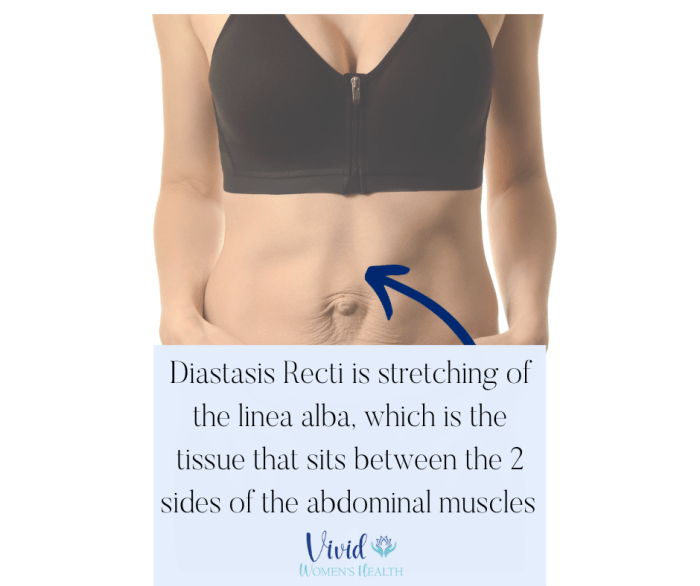What is an esthetician? This profession blends artistry and science, focusing on the beauty and health of the skin. They’re more than just skin deep, possessing a profound understanding of skincare, treatments, and client care. From facials and waxing to product recommendations and consultations, estheticians play a crucial role in promoting healthy skin and boosting confidence.
This comprehensive guide delves into the world of esthetics, exploring the diverse roles, services, and career paths available to those passionate about skincare. We’ll examine the core responsibilities, the educational requirements, and the potential for business ownership, highlighting the essential elements of a successful esthetician’s journey.
Defining an Esthetician
An esthetician is a beauty professional specializing in skin care and related treatments. Their work encompasses a wide range of services, from basic facials to advanced therapies. They play a vital role in enhancing and maintaining the health and beauty of their clients.Estheticians possess specialized knowledge and skills in skincare, makeup application, and body treatments. Their role is multifaceted, requiring a deep understanding of skin types, conditions, and appropriate treatments.
This includes the ability to safely and effectively apply various products and techniques.
Core Responsibilities of an Esthetician
Estheticians are responsible for a range of services, including skin analysis, cleansing, exfoliation, moisturizing, and applying masks. They often conduct consultations with clients to assess their needs and recommend appropriate treatments. This involves a thorough understanding of skin conditions and the ability to tailor treatments accordingly. Additionally, estheticians are often responsible for maintaining a clean and sanitary work environment to ensure the safety and well-being of clients.
Scope of Practice in Different Regions
The scope of practice for estheticians varies across different regions. In the USA, estheticians are generally licensed to perform a wider range of services compared to some European countries. This often includes facials, chemical peels, waxing, and body treatments. In contrast, some European countries may have stricter regulations, limiting estheticians to specific treatments. This difference stems from varying licensing and educational standards across jurisdictions.
So, what exactly is an esthetician? They’re skincare specialists who help you achieve glowing, healthy skin. But let’s be real, sometimes you need a quick energy boost to tackle a long day of pampering clients. Learning how to gain energy fast is crucial for maintaining a healthy work-life balance. Luckily, there are some fantastic tips for boosting your energy levels, like checking out this article on how to gain energy fast.
Ultimately, being a top-notch esthetician involves more than just skin deep knowledge; it’s about well-being too!
Comparison with Other Beauty Professionals
Estheticians, cosmetologists, and makeup artists all work in the beauty industry, but their roles and responsibilities differ. Cosmetologists typically focus on hair care, styling, and coloring, whereas estheticians primarily concentrate on skin care. Makeup artists, on the other hand, specialize in enhancing the appearance of clients through makeup application. While there’s some overlap, each profession has its unique skill set and scope of practice.
Educational Requirements
The educational requirements for becoming an esthetician differ significantly across countries. This is due to varying licensing standards and regulations.
| Country | Minimum Education | Licensing Requirements | Specializations |
|---|---|---|---|
| USA | Generally, an accredited esthetics program (ranging from 600 to 1000 hours) is required. | State-specific licensing exams and continuing education requirements are crucial. | Chemical peels, microdermabrasion, waxing, advanced facials, and specialized treatments are common. |
| Canada | Provincial/territorial requirements vary, but typically include a certificate or diploma from a recognized esthetics program. | Licensing is required, and it often involves passing a provincial exam and maintaining professional certifications. | Microdermabrasion, waxing, advanced facial treatments, and specialized skin care are often within the scope. |
| UK | Esthetics training often involves vocational qualifications or apprenticeships. | Licensing and professional registration are typically necessary to practice. | Various specializations, including advanced facials, waxing, and skin treatments, are pursued by estheticians in the UK. |
Esthetician’s Services
Estheticians are highly skilled professionals who provide a wide range of services designed to enhance and maintain healthy skin. Their expertise goes beyond simply applying products; they understand the intricacies of skin types and concerns, using tailored treatments and techniques to achieve optimal results. This deep understanding allows them to address a variety of skin issues and promote overall well-being.
Common Esthetician Services
Estheticians offer a diverse range of services, encompassing skin care, body treatments, and makeup application. These services cater to a spectrum of needs, from addressing specific skin concerns to enhancing natural beauty. Each treatment is tailored to the individual client’s unique skin type and requirements.
Facials, What is an esthetician
Facials are a cornerstone of esthetic practice. They are customized treatments focusing on specific skin needs, including cleansing, exfoliation, extraction (if appropriate), and hydration. Techniques vary based on the type of facial, from deep cleansing to specialized treatments for aging or acne-prone skin.
Waxing
Waxing is a popular hair removal method that estheticians expertly perform. The process involves applying warm wax to the skin to remove unwanted hair. Proper technique is crucial to ensure minimal discomfort and effective hair removal, preventing ingrown hairs and skin irritation. Different types of waxes and techniques are employed depending on the client’s needs and skin sensitivity.
Makeup Application
Makeup application is an artistic service that estheticians provide to enhance natural beauty. They use a variety of techniques, from contouring and highlighting to creating specific looks like bridal makeup or everyday looks. Understanding skin tones and features is key to achieving a flawless and natural-looking result.
Categorization of Services by Skin Concern
| Skin Concern | Service Type | Description | Benefits |
|---|---|---|---|
| Acne | Deep Cleansing Facial, Extractions, Chemical Peels | These treatments target acne-causing bacteria and debris. Deep cleansing facials remove excess oil and dead skin cells, while extractions safely remove blackheads and whiteheads. Chemical peels can exfoliate the skin and promote cell turnover. | Improved skin clarity, reduced breakouts, minimized pore size, and smoother skin texture. |
| Aging | Anti-aging facials, Chemical peels, Microdermabrasion | Anti-aging facials often incorporate ingredients that stimulate collagen production, helping to reduce wrinkles and fine lines. Chemical peels and microdermabrasion techniques promote skin renewal, revealing a more youthful complexion. | Reduced wrinkles and fine lines, improved skin elasticity, increased firmness, and brighter, more even skin tone. |
| Dryness | Moisturizing facials, Hydrating masks, Intensive hydration treatments | Moisturizing facials focus on replenishing the skin’s moisture barrier with hydrating ingredients. Hydrating masks provide an intense dose of moisture, while intensive hydration treatments incorporate serums and moisturizers for deep hydration. | Improved skin hydration, reduced dryness and flakiness, increased skin softness and smoothness, and a healthier, more supple appearance. |
Frequently Used Products
Estheticians utilize a wide array of professional-grade products tailored to specific skin concerns. These products are formulated with potent ingredients and designed for optimal results.
So, what exactly is an esthetician? They’re skincare specialists who help you achieve your best glow, from facials to waxing. But sometimes, even skincare pros get a little under the weather! For example, if you’re wondering how long a sore throat typically lasts, check out this helpful guide: how long does a sore throat last.
Ultimately, estheticians are all about pampering and keeping you looking and feeling your best!
- Cleansers: Formulated for various skin types, from oily to dry, cleansers effectively remove impurities without stripping the skin’s natural oils.
- Exfoliants: These products gently remove dead skin cells, promoting cell turnover and revealing brighter, smoother skin. Different types of exfoliants cater to different skin needs and sensitivities.
- Masks: Masks are used for targeted treatments, providing intense hydration, nourishment, or exfoliation to address specific skin concerns.
- Serums: These concentrated formulas often contain potent active ingredients, addressing particular skin needs, such as reducing wrinkles, fading dark spots, or controlling acne.
- Moisturizers: Moisturizers help restore and maintain the skin’s moisture barrier, keeping the skin hydrated and healthy.
Esthetician’s Role in Skincare
Estheticians play a vital role in promoting healthy and radiant skin. They go beyond simply applying lotions and creams; they act as skin health advisors, guiding clients towards personalized skincare solutions. Their expertise extends to understanding the unique needs of each individual, considering factors like skin type, concerns, and lifestyle.Estheticians are more than just beauticians; they are skin health consultants who help clients understand their skin’s specific needs and develop routines to maintain its well-being.
Their knowledge of skincare science, combined with their hands-on experience, allows them to offer tailored advice that goes beyond superficial treatments.
Skin Analysis in Esthetic Treatments
Accurate skin analysis is paramount in effective esthetic treatments. This involves a thorough evaluation of the skin’s condition, including its texture, tone, hydration levels, and any existing concerns like blemishes, dryness, or hyperpigmentation. A comprehensive analysis allows the esthetician to identify specific issues and tailor treatments accordingly. For example, a client with oily skin and acne may require different treatments than a client with dry, sensitive skin prone to irritation.
Precise analysis forms the foundation for effective and personalized recommendations.
Importance of Product Recommendations
Estheticians play a crucial role in recommending appropriate skincare products. Their knowledge of various ingredients, brands, and product formulations enables them to select products that effectively address clients’ specific needs. This includes considering factors like product efficacy, potential allergies, and compatibility with existing skincare routines. By understanding the potential interactions between products, estheticians can create a holistic approach to skincare, avoiding conflicts and maximizing results.
For instance, a product with retinol might not be suitable for a client with sensitive skin, requiring a different approach.
Factors to Consider When Advising Clients
Estheticians must consider several factors when advising clients on skincare routines. These factors include the client’s skin type, concerns, lifestyle, and budget. Understanding these elements allows for the creation of a personalized routine that caters to individual needs and preferences. For example, a client with a busy schedule might need a simplified routine, while someone with more time and resources could explore more elaborate regimens.
Additionally, potential allergies, sensitivities, and current medications should be considered to avoid adverse reactions.
- Skin Type: Understanding the client’s skin type (normal, oily, dry, combination) is essential for choosing appropriate products and treatments. Different skin types react differently to various ingredients and formulations. For example, a client with oily skin may benefit from products containing salicylic acid, while a client with dry skin may need products rich in moisturizing agents.
- Skin Concerns: Identifying the client’s specific skin concerns (acne, wrinkles, hyperpigmentation, dryness) is vital for tailoring a personalized treatment plan. For instance, a client with acne may benefit from products containing benzoyl peroxide or salicylic acid, while a client with wrinkles might need treatments focusing on collagen stimulation.
- Lifestyle Factors: A client’s lifestyle, including diet, sleep patterns, and stress levels, can significantly impact their skin health. Estheticians should consider these factors when recommending skincare routines to ensure they align with the client’s overall well-being. For example, recommending a product containing antioxidants can be beneficial for clients with stressful lifestyles.
- Budget: Product recommendations should align with the client’s budget to ensure accessibility and long-term adherence to the skincare routine. A wide range of products is available to suit different budgets, from affordable drugstore brands to more luxurious options.
Client Consultation in Esthetic Treatments
Client consultation is critical in esthetic treatments. It provides a platform for open communication between the esthetician and the client, enabling a deeper understanding of the client’s needs and expectations. This dialogue allows the esthetician to tailor treatments to the client’s specific requirements and preferences, fostering a collaborative approach to achieving desired outcomes. A thorough consultation helps build trust and rapport, ultimately leading to a more effective and satisfying experience for the client.
Educating Clients About Skincare
Educating clients about skincare is a key aspect of an esthetician’s role. This involves explaining the rationale behind different treatments and product recommendations, emphasizing the importance of consistency and long-term commitment to achieving optimal results. Clear and concise explanations, coupled with visual aids and demonstrations, can help clients understand their skin’s unique needs and how to effectively address them.
Furthermore, regular follow-up appointments and ongoing support can enhance the client’s understanding and adherence to the skincare regimen. For example, demonstrating how to apply a serum correctly can significantly improve the client’s ability to achieve the desired results.
Career Path and Future Trends: What Is An Esthetician

Embarking on an esthetician career offers a dynamic path with diverse opportunities. From foundational training to specialized expertise, estheticians can tailor their careers to their passions and ambitions. This journey often involves a blend of hands-on practice, client interaction, and continuous learning to stay ahead in a constantly evolving industry.The esthetic industry is not just about facials and manicures; it’s a field constantly adapting to new technologies and client demands.
So, what exactly is an esthetician? They’re skincare specialists who help you achieve your best skin. Think glowing, healthy skin, and they’re experts at helping you get there. Plus, incorporating foods like sweet potatoes into your diet can contribute to a healthy glow, which is something an esthetician can help you discover more about too. For a deeper dive into the nutritional benefits of sweet potatoes, check out this helpful resource: benefits of sweet potatoes.
Ultimately, estheticians work to help you understand and achieve the best possible version of your skin, inside and out.
This adaptability is crucial for estheticians looking to thrive and advance in their careers. Understanding emerging trends and embracing technological advancements can be key to securing a rewarding and fulfilling future in this exciting field.
Typical Career Path
The typical career path for an esthetician often begins with completing an accredited esthetics program. This program provides foundational knowledge and practical skills, equipping individuals with the essential tools to start their careers. Graduates may enter the field as entry-level estheticians in salons, spas, or medical spas. As experience and expertise grow, opportunities for advancement, including specialized training and management roles, become available.
Career Advancement Opportunities
Estheticians can pursue various avenues for career advancement. This may include specialization in areas like microdermabrasion, chemical peels, or laser treatments. Further education and certifications can lead to higher-paying positions in advanced esthetic practices. Management roles in salons or spas, and even positions as educators or consultants, are also viable options for those seeking career progression. Mentorship and networking with established professionals in the field can be invaluable for career growth.
Esthetician Careers in Different Industries
Esthetician careers can vary depending on the industry. Salons and spas often offer a broad range of services, allowing estheticians to develop a wide range of skills. Medical spas, on the other hand, integrate esthetic services with medical treatments, requiring estheticians to possess knowledge of medical procedures and protocols. Mobile esthetics is another emerging trend, providing convenience and flexibility for clients.
The variety of industries caters to different career preferences and allows estheticians to choose the environment that best suits their interests and skill sets.
Emerging Trends in the Esthetic Industry
Several emerging trends shape the esthetic industry. Personalized skincare regimens tailored to individual client needs are gaining popularity, demonstrating a shift towards more customized approaches. The integration of technology, such as AI-powered skincare analysis and virtual consultations, is transforming how estheticians interact with clients. Sustainable practices are becoming increasingly important, with eco-friendly products and salon operations gaining prominence.
Technology’s Impact on Esthetician Roles
Technology is significantly impacting the role of an esthetician. Digital tools for client scheduling, appointment reminders, and online consultations are becoming essential. AI-powered tools for skin analysis can help estheticians provide more personalized treatments. Furthermore, online platforms for learning and networking are expanding access to continuing education and professional development. The incorporation of technology enhances efficiency and allows estheticians to offer a more comprehensive and personalized experience.
Potential Future Specializations
Future specializations in the esthetic industry may involve incorporating advancements in biotechnology and personalized medicine. Nanotechnology-based treatments for targeted skin concerns and personalized skincare products tailored to genetic predispositions are potential future avenues. Specialized knowledge in areas like cosmetic injectables and advanced laser techniques might also become highly sought-after specializations. Estheticians with advanced training and knowledge in these areas can position themselves for leadership roles in the evolving industry.
Esthetician and Business
![Esthetician Training [The Comprehensive Guide] What is an esthetician](https://healthytipp.com/wp-content/uploads/2025/06/esthetician-training-4-scaled-1-1.jpg)
Turning your passion for skincare into a thriving business requires careful planning and execution. It’s not just about applying masks and facials; it’s about building a brand, attracting clients, and managing the financial and operational aspects of your business. This section will explore the key elements of success in the esthetics industry, from marketing strategies to essential business documents.Running a successful esthetic business involves more than just technical skills.
It demands a strong understanding of business principles, effective marketing, and a strategic approach to building a loyal client base. From establishing a strong brand identity to navigating financial management, this guide will equip you with the knowledge needed to transform your esthetic practice into a profitable venture.
Running a Successful Esthetic Business
Building a profitable esthetic business requires a blend of technical expertise and business acumen. This includes developing a clear business plan, understanding your target market, and establishing a strong brand identity. It’s crucial to maintain a consistent brand message across all platforms, from your website to social media.
Importance of Marketing and Branding
A strong marketing and branding strategy is essential for attracting and retaining clients in the competitive esthetic industry. A well-defined brand identity sets you apart from competitors and builds trust with potential clients. It communicates your unique value proposition, highlighting your expertise and services. This includes developing a strong online presence through a professional website and engaging social media profiles.
Effective Marketing Strategies for Esthetic Businesses
Several strategies can effectively promote an esthetic business. One critical strategy is to build a strong online presence through a user-friendly website and engaging social media profiles. This platform should showcase your services, expertise, and client testimonials. Content marketing, including informative blog posts and educational videos, can attract potential clients and establish you as an authority in the field.
Consider offering introductory packages, loyalty programs, and referral incentives to encourage repeat business and client referrals. Partnerships with local businesses can also expand your reach and introduce your services to new audiences.
Potential Challenges and Solutions for Esthetic Business Owners
Managing an esthetic business presents unique challenges. One key challenge is maintaining a balance between providing high-quality services and managing financial obligations. Developing a realistic budget, tracking expenses meticulously, and understanding pricing strategies can help overcome this hurdle. Another challenge is managing client expectations and maintaining a positive client experience. Implementing a clear communication strategy and responding promptly to client inquiries are crucial.
Time management is also a significant factor, especially for solo practitioners. Utilizing scheduling software and delegation of tasks where possible can help manage this.
Essential Business Documents for an Esthetician
Proper documentation is crucial for any business, and this is especially true for estheticians. A comprehensive list of essential documents includes a business license, permits, and insurance. Detailed financial records, including income statements, expense reports, and balance sheets, are essential for tracking profitability and making informed business decisions. Contracts with clients and vendors are also vital to protect both parties’ interests and ensure transparency.
Maintaining detailed client records, including consent forms and treatment plans, is critical for compliance and professional practice.
Final Wrap-Up
In conclusion, estheticians are vital members of the beauty industry, offering a wide array of services tailored to meet diverse skin concerns. From personalized consultations to expert treatments, they empower clients to achieve their skincare goals. Furthermore, the field offers a dynamic career path with opportunities for specialization and business growth. The future of esthetics is promising, with ongoing advancements in technology and evolving client demands driving innovation in this fascinating field.























![[Omega] Speedmaster Automatic : Watches Omega 3 6 9](https://healthytipp.com/wp-content/uploads/2025/06/o21530462103002_d_1_2-1.jpg)







